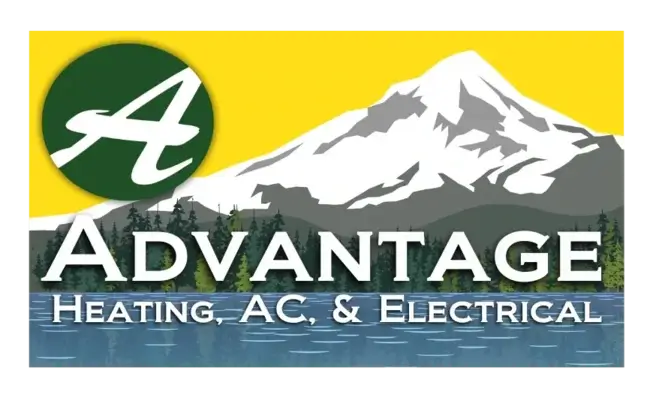Is a High Efficiency Furnace Worth the Price Tag?
Everybody enjoys saving money and being comfortable. More and more people are becoming conscious of their carbon emissions and want to cut those back as well. Something that could help a person meet those three goals at the same time is a high efficiency furnace. However, they have a hefty price tag when compared to their less efficient rivals. But are they worth it?
In this article, we’ll explain what the differences are between low and high efficiency furnaces and where you can find savings with either choice. You should feel informed and confidant with purchasing a new furnace by the end of this article.
How Manufacturer’s Grade Efficiency
Before we get into the meat of this article, we need to break down how efficiency ratings work. The furnace’s AFUE rating shows how efficient it is. The AFUE rating is the percentage of how much fuel gets converted to heat that enters your home. Therefore, a furnace with a 95% AFUE rating is more efficient than a furnace with an 80% AFUE rating.
The minimum AFUE that you will find on the market today is 80%. High efficiency furnaces are furnaces that have an AFUE above 90%.

You can also tell what kind of furnace you have by giving it a visual inspection. If your furnace has a PVC venting & drain, then it’s high efficiency. If it has a metal vent with no drain, then its low efficiency.
The Difference in Cost
The biggest reason that some people choose a less efficient furnace over a more efficient model is the initial price. High efficiency furnaces are going to cost more than less efficient models and there’s no way around that. This price difference can be in the thousands of dollars.
It’s a Long-Term Investment
So, if a high efficiency furnace is the more costly option, why are they advertised as money savers? It’s because an efficient furnace will save you money in the long term. An efficient furnace uses much less energy than their counterparts and will therefore lower your energy bill.
Furnaces have an estimated lifetime of 20 years. If you purchase your furnace with the goal of saving money over those 20 years, you will end up saving more money than the difference you spent versus a less an efficient furnace.
Not for House Flippers
However, if you only plan on staying in a house for a few years, or are flipping property, then you might not get the same value from a high efficiency furnace. Yes, it will add more value to the home than a low efficiency furnace, but it might not change the sale value by a noticeable amount. If you’re only looking at short-term use, then a low efficiency furnace may be what you want.
The Difference in Speed
Another difference to look for when purchasing a new furnace is the speed at which they operate.
Single-stage furnaces are also called single-speed furnaces, meaning they only have an off or on setting. This makes it less efficient. It’s using the maximum amount of fuel and energy for the smallest change in temperature.
Two-speed or variable speed furnaces are the upgrade to a single-stage furnace. That means that they can use lower speeds to provide smaller amounts of heating. This results in less fuel and energy usage to provide a more specific level of heating.
While it is possible to get a low-efficiency furnace as a variable-speed model, a high-efficiency variable speed furnace uses the least energy to deliver the most heat.
Considerations
There are a few more variables that you should consider before making a choice. This can affect whether the savings from a high efficiency are immediately noticeable.
Climate
How hot or cold the region that you live in is affects how often you need to use your furnace and for how long. If you live in a colder climate, you will naturally use your furnace more frequently and require more drastic heating for your home. A high efficiency furnace will provide that heat to your home using much less natural gas throughout the entire time you’re using it.
That means that if you live in a state with long, harsh winters, you will notice an immediate difference in your energy bill after switching to a high efficiency furnace.

House Size
If you have a large house, your furnace will need to use more fuel and energy to heat all that space. Using a high efficiency furnace will use less fuel than a low efficiency furnace to heat the same amount of space.
Tax Credit
If you live in the United States, the tax code incentivizes you to make your home energy efficient. One factor that is considered is how energy efficient the HVAC system is. By investing in an energy efficient furnace, you might be eligible for a tax credit. For specifics, you can check with the IRS.
Other Advantages to High Efficiency Furnaces
Beyond just using less gas and energy, there are additional benefits to choosing a high efficiency furnace. Manufacturers invest a lot in the additional features of these furnaces, and these features can provide more functions and uses around your home.
More Modern Technology

Typically, if you want to have your HVAC system integrated into a smart home, you’ll have to look at a more efficient furnace. A smart thermostat is the most important piece of technology for a smart home. However, to get the most of the thermostat’s smart settings, you’ll want a furnace with variable speed settings. Those variable speeds will allow for better precision when programming your thermostat.
Necessary for Zoning
If you want to use HVAC zoning, you will need to have a two-speed furnace, but a variable-speed system is preferable.
Zoning is a method of running an HVAC system that manages temperatures in different parts of your home separately. This is effective at maintaining consistent temperatures in multistory or large homes.
A furnace with multiple speed settings is required to get the specific levels of heating and airflow needed to adjust one section of your home without blasting too much air through the rest of your ducts.
Better Home Comfort
As we stated earlier, a single-speed furnace will only run at max power. High efficiency furnaces that are variable speed can produce heat at lower levels of power. While both pieces of equipment will bring your home to the desired temperature, you may notice that the efficient furnace is more consistent.
A single speed furnace can overheat parts of your home by a few degrees. It’ll pump warm air at full power until the thermostat detects a change in temperature. Your thermostat, only being in one location, cannot detect the change in temperature in other rooms. This can cause side rooms that are already warm being over heated.
A multi-speed furnace will only pump enough air to change the temperature to what you have set the thermostat to. This is not a perfect system, as it still relies on a thermostat that is in a single location or in a specified zone. However, this means that instead of that warm room getting the full force of a furnace, it’s only getting a small amount. Resulting in more consistent and even temperatures throughout your home.
Final Word
To sum it all up, there are valid reasons to purchase either a low efficiency or high efficiency furnace.
If you plan on sticking in your current home for a while or want to take advantage of a smart system with modern technology, then an efficient furnace will absolutely be worth the investment. You will immediately notice savings on your monthly natural gas bills that are sometimes drastic. Over time, that savings will pay back the cost of the furnace. You will also get better functionality out of your furnace as part of a smart home system.
However, if your current home is only a short-term situation, then you may not get enough use out of your furnace to save more money than you spent.
If you are planning on flipping the property you are purchasing the furnace for, it won’t add enough value to be worth it.
Who Are Advantage Heating and Air Conditioning. LLC?
We are your local HVAC Experts out of Salem, Oregon. We hope that this post gave you the information you need decided if a high-efficiency furnace is right for you. If you have other questions about HVAC systems, check out our other blogs. To learn more about who we are and how we can help you, visit our website and follow us on social media – we’re here when you need us!







